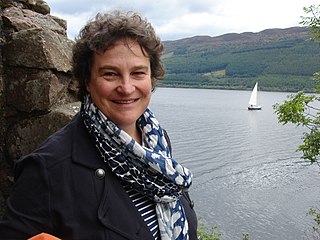Origin
The surname van Wolfswinkel traces its origins to a farm in the village Renswoude called "Klein Wolfswinkel" which translates to "small wolf's store/shop". The middle part van means "from" in Dutch. The name could either be from the farm being a store back then and where back then in the area where wolves would roam. Or it could be from the farm also being a store in those days owned by someone named Wolf (or Wulf as old translation could be).
The farm has had the name "Klein Wolfswinkel" since at least 1321. In 1920 the farm building, of Saxon type, was destroyed in a fire. The rebuilt building was so damaged by the Second World War that a new farm was built in 1950. Despite multiple versions of the surname, the original name remains "van Wolfswinkel".
The farm remained from January 31, 1696, until mid-19th century in the possession of the "van Wolfswinkel" bloodline. In the mid-19th century the farm was sold to the Baron Taets van Amerongen (the baron of Renswoude). Since 1974 the farm has been in possession of H. van den Dikkenberg and his descendants.
Geert Jan Jansen is a Dutch painter and art forger, who was arrested in 1994.

Marlene van Niekerk is a South African academic, novelist and poet who is best known internationally for her novels Triomf and Agaat. Her graphic and controversial descriptions of a poor Afrikaner family in Johannesburg in Triomf brought her to the forefront of a post-apartheid society still struggling to come to terms with all the changes in South Africa. This novel was made into an award-winning film, likewise called Triomf_(film), in 2008, directed by Michael Raeburn.

The University of the Free State is a multi campus public university in Bloemfontein, the capital of the Free State and the judicial capital of South Africa. It was first established as an institution of higher learning in 1904 as a tertiary portion of Grey College. It was declared an independent Afrikaans-language university in 1950 and the name was changed to the University of the Orange Free State. The university has two satellite campuses. Initially a whites-only precinct, the university was fully de-segregated in 1996. The first black university vice-chancellor was appointed in 2010.

Janine Jansen ; born 7 January 1978 in Soest in the Netherlands) is a violinist and violist.

Hendrik Niehoff was a Dutch pipe organ builder, who learned with noted builder, Jan van Covelen. According to Liuwe Tamminga, Niehoff was born in Leeuwarden, the capital of Province Friesland. Following Jan van Covelen's death in 1532, Hendrik Niehoff established his shop in 's-Hertogenbosch to continue building new and upgrading organs throughout the Netherlands and in major Hanseatic cities and, thus, can be considered the most significant organbuilder in northwestern Europe in the middle third of the 16th century due both to the fabulous visual architectural quality of the cases and the exquisite sounds these instruments make for the eye and ear.

Cornelius Cruys was a Norwegian–Dutch admiral of the Imperial Russian Navy, and the first commander of the Russian Baltic Fleet.

Jan Joseph Godfried, Baron van Voorst tot Voorst Jr. was the second highest officer in command of the Dutch armed forces during World War II and a renowned strategist, who wrote numerous articles and books on modern warfare.
Pieter Claesen Wyckoff was a prominent figure in Dutch and later English colonial Kings County, Long Island, New York. Most persons surnamed Wyckoff in North America, including many variations in spelling, can be traced to his family. After some time spent at Rensselaerwyck, near present-day Albany, New York, in 1655 Pieter moved his family into a rented house in New Amersfoort. Pieter Claesen prospered here, acquired land and became a local judge. He was influential in establishing the Flatlands Dutch Reformed Church at the juncture of Flatbush Avenue and Kings Highway in Brooklyn. The Wyckoffs are prominent members in Manalapan, New Jersey.
Dutch names consist of one or more given names and a surname. The given name is usually gender-specific.

Jan Six was an important cultural figure in the Dutch Golden Age.

Joan or Johan van Scharphuysen, Scharphuizen or Jan van Scherpenhuizen was a Dutch colonist, a judge in Suriname, a slave-trader, colonial governor from 1689 to 1696 on behalf of the Society of Surinam, and a considerable plantation-owner.
William or Willem Dervall was a Dutch-born Mayor of New York City from October 17, 1675 until October 14, 1676.
Adriaen Pietersz Crabeth was a Dutch Renaissance glass painter.
Jan Hendrik Waszink was a Dutch Latin scholar, Professor of Latin at Leiden University. Best known as an expert on Tertullian, he also edited the translation and commentary by Calcidius on Plato's Timaeus.
Ernst Nicolaas Herman Jansen,, later known as Ernst Jansen Steur, is a former Dutch neurologist, who garnered notoriety for misconduct and lost his license to practice medicine.
Truite d'Or is a defunct restaurant in Gulpen, Netherlands. It was a fine dining restaurant that was awarded one Michelin star in 1977 and retained that rating until 1980.
Events in the year 1635 in the Spanish Netherlands and Prince-bishopric of Liège.

Stellenberg is a suburb in Bellville, Western Cape South Africa.

The Koninklijke Schouwburg is a theater in the city center of The Hague. The theater was built in 1766 and has been in use as theater since 1804. From 2017 it is one of the theaters in use by the national theater company Het Nationale Theater, but also other companies perform in the Schouwburg.
This page is based on this
Wikipedia article Text is available under the
CC BY-SA 4.0 license; additional terms may apply.
Images, videos and audio are available under their respective licenses.









